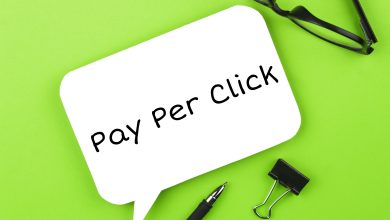Increase your online presence by improving your website

Is your website aging? The design of this one is not to your taste? Or the traffic generated by your site is low? Perhaps now is the time to make some changes to your website. Here are some tips to improve your website!
1. The design of your site: improving the aesthetic aspect
To improve your website the first thing is to mend its aesthetic appearance. Thanks to this, you will make users want to continue browsing your site.
The homepage
Typically, the first page visitors see of your site is the home page. It is therefore vital to make a good impression from the start.
Therefore, your homepage should overview what you offer and thus your business. Indeed, the visitor must immediately understand your offer. Opt for a simple, straightforward, readable, and catchy title.
Regarding the presentation of the home page, we advise you to structure it like this:
- Quick display of your offer and your services
- Company presentation
- Reassurance elements such as customer testimonials
- Contact form
The design is essential, but the content is also a critical element. So, write straightforward content that goes straight to the point. It will make navigation easier for your users. Finally, don’t forget to add calls to action to your page.
Visual elements
The eye is always more attracted by visual elements such as images, videos, or even pictograms than large blocks of text. That is why we advise you to alternate your content with text and pictures. It will make your site more attractive!
In addition, choose your images carefully. They must be related to your content. If you don’t have pictures, there are several copyright-free image banks such as pixabay, unsplash, freepik, etc.
You can also create your images or use branded pictograms in your company colors. For example, the flaticon tool allows you to find pictograms and transform them into your colors.
2. The structure of your site: improving the user journey
While your site design gives an excellent first impression, you also need to optimize your site structure. It facilitates the user journey.
The organization of the pages of the site
When we talk about site structure, we refer in particular to the site’s main menu. Indeed, it would help if you offered a simple, visible, and explicit main menu. For example, you can arrange your headings like this: home, offers, services, about, contact. This provision is to be adapted according to your activity.
Next, properly organize your site tree. It allows consistency between the different site pages and avoids having too deep or duplicate pages. Indeed, beyond 3 clicks necessary to reach a page, it is considered too deep, which is very bad for SEO!
Properly organizing the pages of your site via an efficient main menu and a clear tree structure will allow you to improve navigation and the user experience.
Optimization of the conversion funnel
Use calls to action, forms, and widgets to optimize your conversion funnel.
First, your site must contain several calls to action (also called CTAs) to convert. To be more effective, your CTAs must be placed in strategic places on the site and visible within the content. The ideal is to have 3 call-to-action buttons per page.
Second, place forms on your site. They are essential to collect information about your users and keep in touch with them. However, be careful not to make the forms too long. Here is an example of a contact form: surname + first name, email address, your message.
Finally, widgets can also allow you to collect contact information from your users before they leave your site. In exchange, offer them to subscribe to your newsletter or download a white paper, for example.
These dynamic modules that are displayed according to user actions can take several forms: the site exit widget, the bottom drawer, the banner.
3. The referencing of your site: optimizing your visibility
The best solution is to work on your natural referencing to improve your website and gain traffic.
The choice of keywords
Step number 1 in implementing an SEO strategy is choosing your keywords. It will allow you to position your site on relevant keywords to create consistency throughout your site.
To do this, you must define for each page of your site:
- A single target query: this is the main keyword of your page
- A set of keywords: they will reinforce the target query
It helps Google rank your site and make your site stand out for targeted keywords.
Natural referencing techniques (SEO)
SEO techniques to improve the natural referencing of your site are multiple. Here are the most common!
For each page, Write meta descriptions.
These are short descriptions of your pages that typically appear in search results. They give an overview of the content of the page to visitors but also Google. It must be precise and unique: 2 pages of your site cannot have the same meta description.
Use tags to structure your pages with titles, subtitles, and paragraphs.
The robots that browse your site use the tags like H1, H2, H3, etc., to know the main subject and the secondary themes. It is therefore necessary to include a unique h1 tag, as well as h2 and h3 tags to better structure your content.
But there are other techniques to optimize your site, such as: naming your images, compressing multimedia, removing broken links. It all depends on your site’s current health from an SEO perspective!
Whatever your objective (gaining visibility, finding new customers, displaying your expertise), it is essential to think carefully about your site and to improve it continuously—the goal: to make life easier for users by meeting their needs. Moreover, MavenUp Creatives intervenes in different aspects to help you: SEO, content strategy, or even conversion strategy. Do not hesitate to ask for your action plan!





